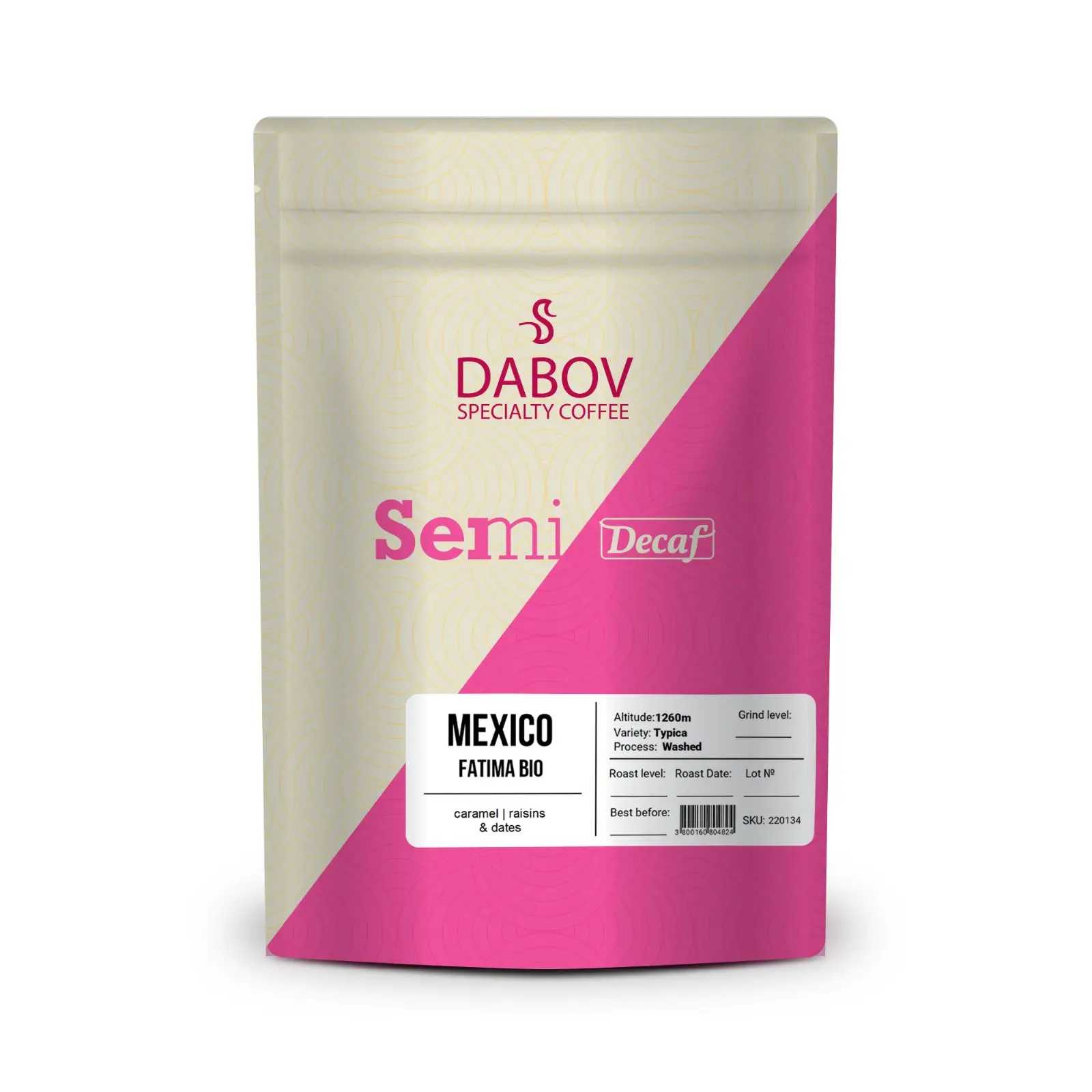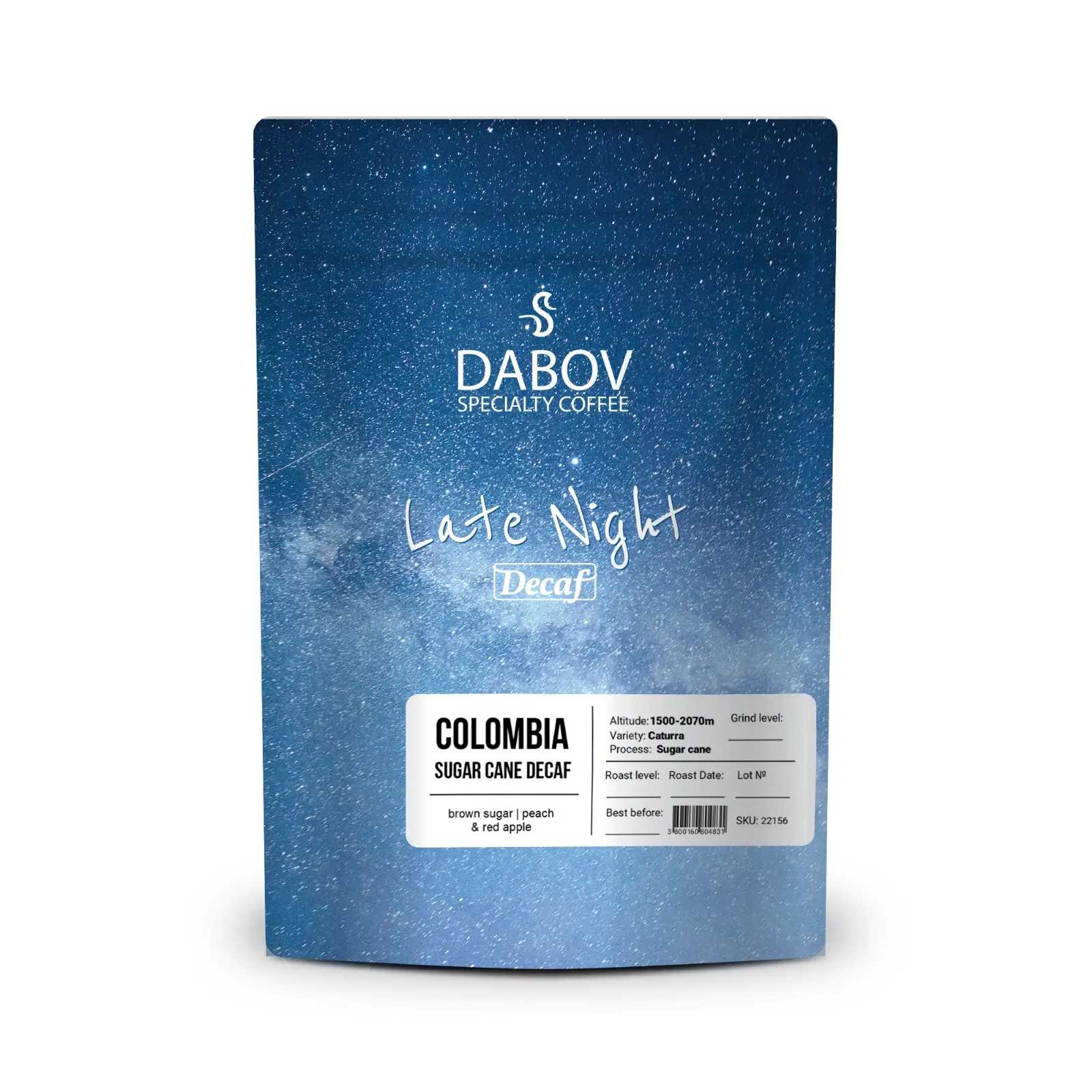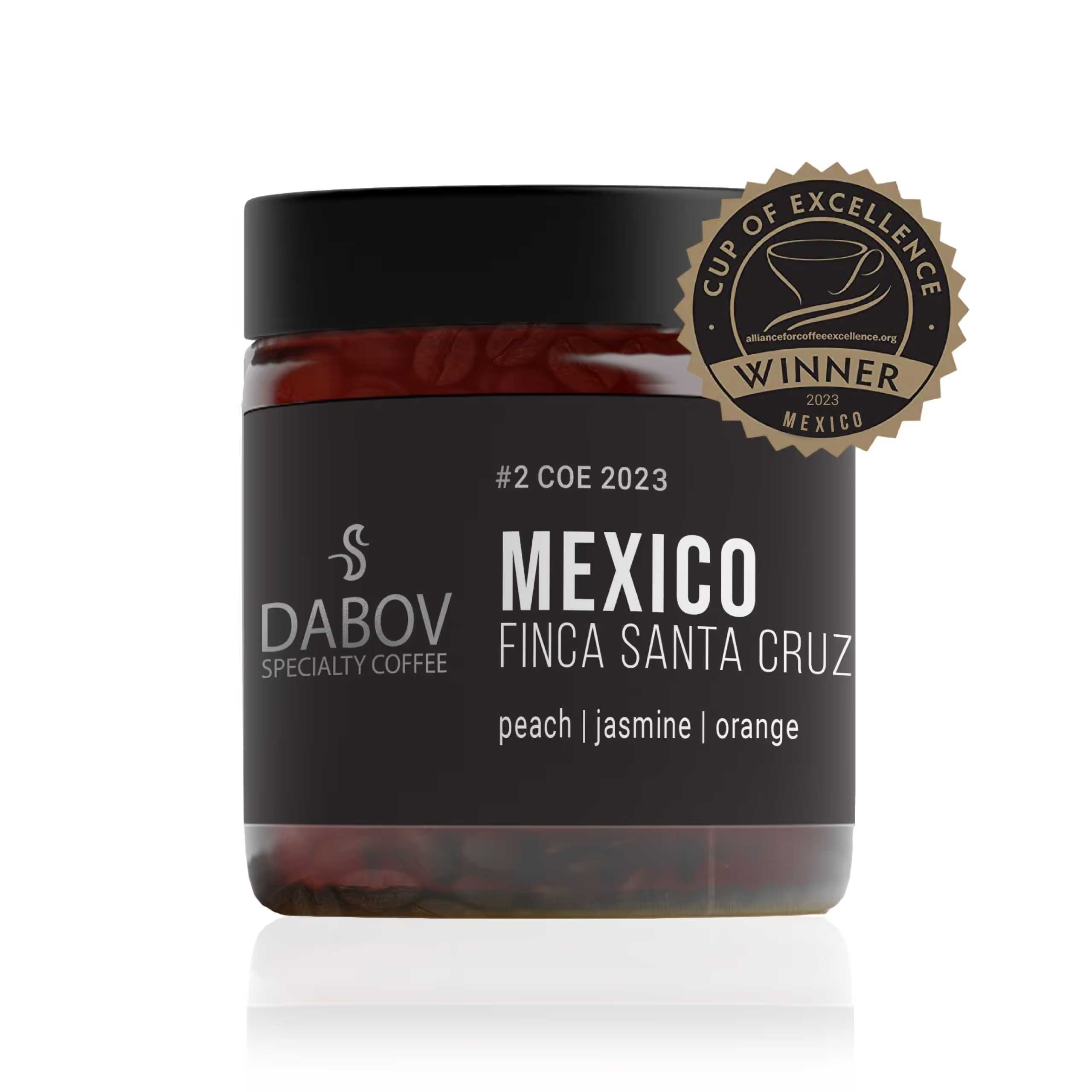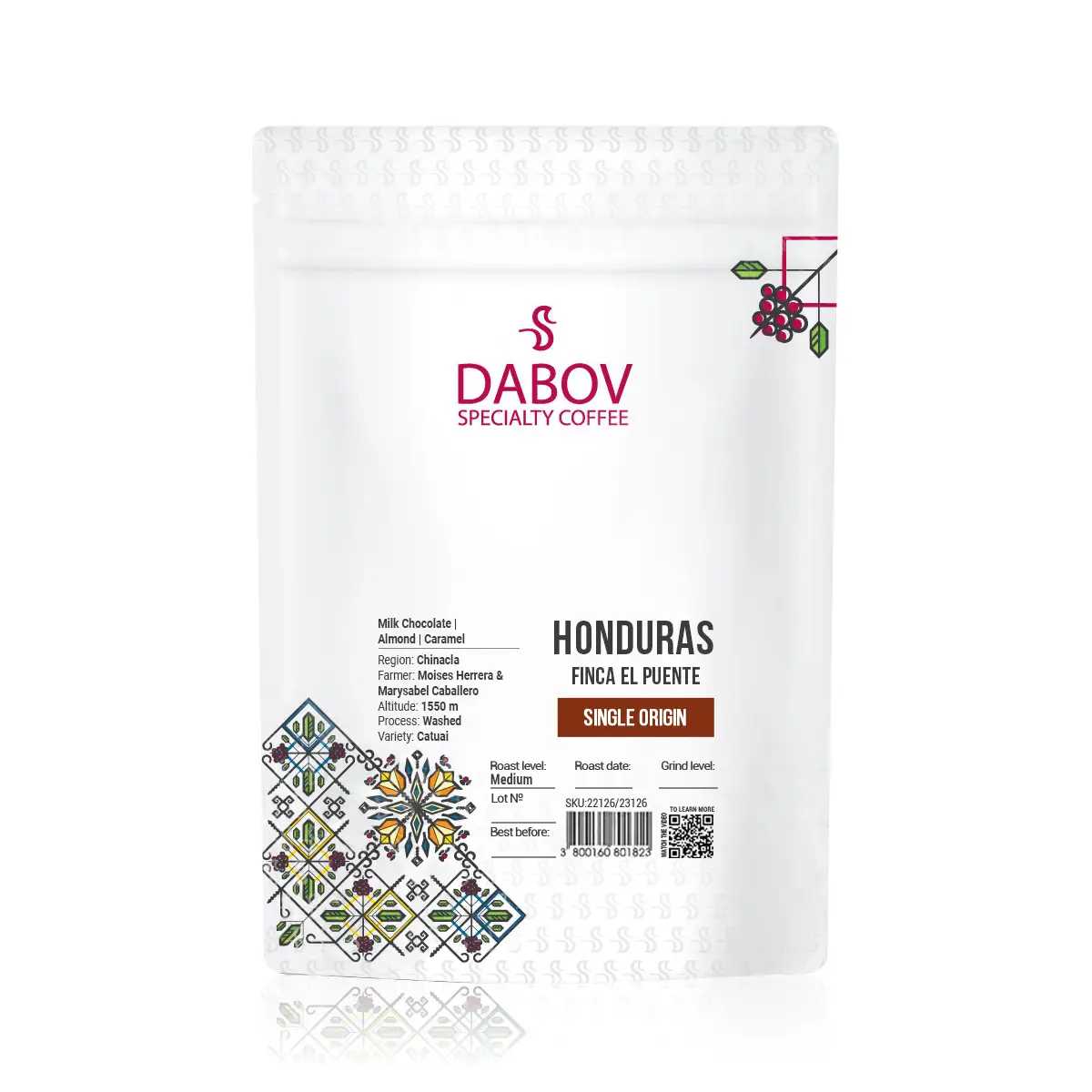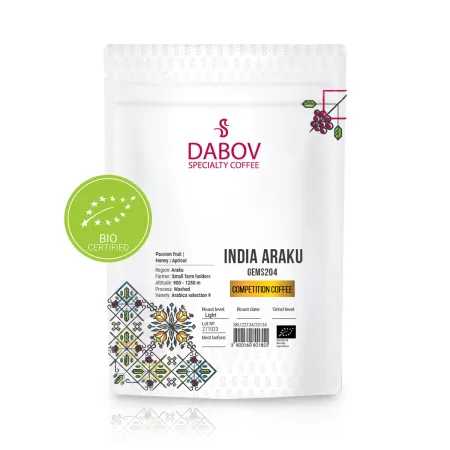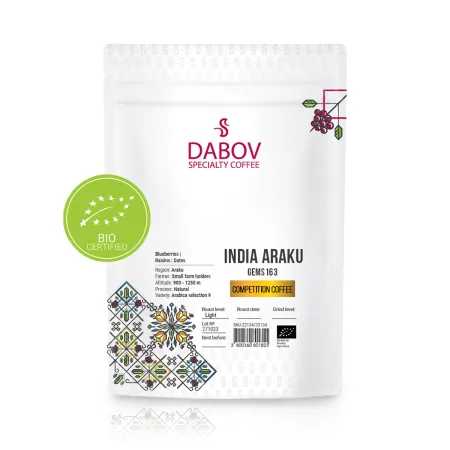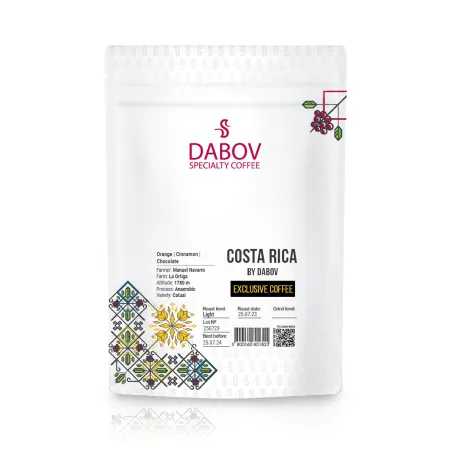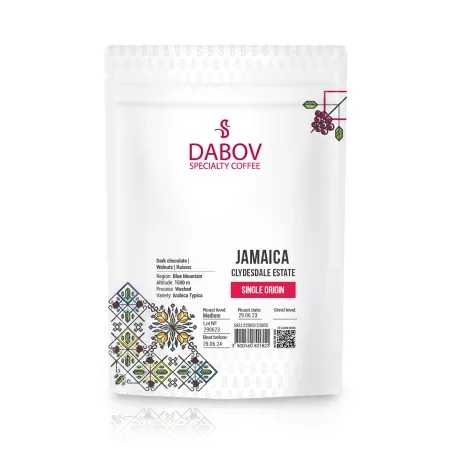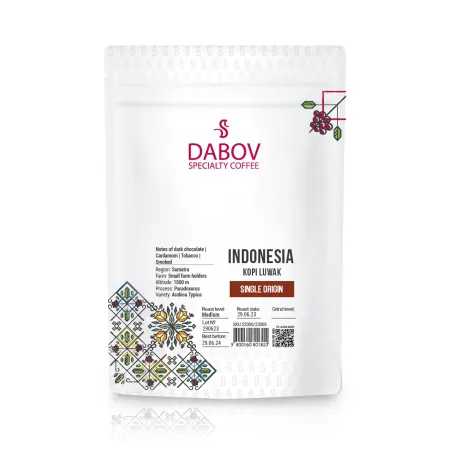Exploring the Best Coffee Gear for Experienced Brewers
Are you ready to elevate your coffee brewing experience? Discover the evolution of coffee preparation from simple methods to expert techniques. This comprehensive guide explores the essential gear for seasoned coffee enthusiasts, emphasizing how quality tools enhance flavor extraction and brewing consistency. From advanced coffee makers like pour-overs and espresso machines to precision tools such as temperature control devices, we cover it all. Join us as we uncover the best coffee gear, essential maintenance tips, and how to create your ideal brewing setup. Get ready to brew that perfect cup and transform your coffee journey!
Introduction
The world of coffee brewing has undergone a remarkable transformation in recent years, evolving from simple percolators and instant coffee to a sophisticated landscape of precision equipment and artisanal techniques. This evolution reflects not just a change in taste preferences but a growing appreciation for the complexity and nuance of coffee as a culinary experience. For experienced brewers, this shift has opened up a world of possibilities, where each cup of coffee is an opportunity to explore the intricate interplay of variables that contribute to the perfect brew.
The purpose of this article is to delve deep into the realm of high-quality coffee gear that caters to the discerning palates and exacting standards of seasoned coffee enthusiasts. We'll explore why having the right tools is not just a luxury but a necessity for those who seek to elevate their coffee brewing to an art form. From precision grinders to temperature-controlled kettles, we'll examine the equipment that can make the difference between a good cup of coffee and an exceptional one. By understanding and utilizing these advanced tools, experienced brewers can unlock new dimensions of flavor, aroma, and texture in their daily coffee ritual.
Section 1: Understanding the Essentials of Coffee Gear
1.1 What Makes Coffee Gear Essential?
The journey from bean to cup is a delicate process, one where each step can significantly impact the final result. For experienced brewers, coffee gear is not just about convenience; it's about control, precision, and the ability to consistently reproduce exceptional results. High-quality coffee equipment allows for the meticulous manipulation of variables such as grind size, water temperature, and extraction time, each of which plays a crucial role in flavor extraction and overall brew quality.
Consider the grinder, for instance. A precision burr grinder can produce uniform coffee particles, ensuring even extraction and preventing the bitterness or sourness that can result from inconsistent grounds. Similarly, a temperature-controlled kettle allows for the maintenance of optimal brewing temperatures, which can vary depending on the coffee's origin and roast profile. These tools, among others, provide the experienced brewer with the means to fine-tune their process, experimenting with subtle adjustments to achieve the perfect balance of flavors.
Moreover, specialized coffee gear opens up a world of brewing methods that are simply not possible with basic equipment. Pour-over devices, siphons, and espresso machines each offer unique extraction profiles, allowing brewers to explore the full spectrum of flavors that different coffees can offer. This versatility is invaluable for those who appreciate the nuances of single-origin beans or who enjoy adapting their brewing method to complement specific roast profiles.
The importance of quality gear extends beyond just the brewing process. Proper storage containers, for example, can significantly extend the shelf life of coffee beans, preserving their aromatic compounds and ensuring that each brew starts with the freshest possible ingredients. In essence, every piece of equipment in an experienced brewer's arsenal contributes to a holistic approach to coffee preparation, where excellence is pursued at every stage from storage to serving.
1.2 Key Characteristics of Quality Brewing Equipment
When it comes to selecting coffee gear for experienced brewers, several key characteristics distinguish exceptional equipment from the merely adequate. Durability is paramount; high-quality coffee gear is an investment, and experienced brewers expect their tools to withstand the rigors of daily use. This durability often manifests in the form of robust materials like stainless steel, borosilicate glass, or high-grade plastics that resist wear and maintain their integrity over time.
Precision is another critical factor. Experienced brewers understand that consistency is key to reproducing great results, and this requires equipment that offers fine control over various parameters. For instance, a top-tier grinder should offer a wide range of grind settings with small, discernible increments between each level. This allows for minute adjustments that can significantly impact extraction and flavor profile. Similarly, kettles with precise temperature control, often to within a degree or two, enable brewers to experiment with how different water temperatures affect the extraction of various coffee compounds.
Design aesthetics, while perhaps less crucial from a purely functional standpoint, play an important role in the overall coffee brewing experience. Many experienced brewers view their equipment not just as tools but as expressions of their passion for coffee. Beautifully crafted pour-over stands, elegantly designed espresso machines, and sleek, minimalist grinders can transform the brewing process into a visually pleasing ritual. Moreover, thoughtful design often correlates with improved functionality; ergonomic handles, intuitive interfaces, and efficient layouts can make the brewing process more enjoyable and less prone to error.
The materials used in construction not only contribute to durability but can also affect the brewing process itself. For example, the thermal properties of different materials can impact heat retention during brewing, while the porosity of certain ceramics can influence the development of flavors over time. Experienced brewers often seek out equipment made from materials that complement their preferred brewing methods and flavor profiles.
Lastly, versatility is a characteristic highly valued by seasoned coffee enthusiasts. Equipment that can adapt to different brewing methods or accommodate a range of batch sizes allows for greater experimentation and flexibility. This might manifest as a grinder capable of producing both espresso-fine and French press-coarse grounds, or a kettle with multiple pour spout options for different levels of flow control.
Section 2: Core Brewing Equipment for Experienced Brewers
2.1 Coffee Makers: Beyond Basics
For experienced brewers, the choice of coffee maker is a deeply personal decision that reflects their brewing philosophy and flavor preferences. While drip coffee makers have their place, many enthusiasts gravitate towards methods that offer greater control and engagement with the brewing process. Advanced coffee makers cater to this desire for precision and involvement, allowing brewers to fine-tune every aspect of the extraction process.
2.1.1 Pour-Over Coffee Makers
Pour-over coffee makers have gained immense popularity among coffee aficionados for their simplicity and the level of control they offer. This method involves manually pouring hot water over ground coffee in a filter, allowing for precise management of water flow, temperature, and extraction time. The Chemex and Hario V60 are two iconic examples of pour-over devices, each with its unique design and brewing characteristics.
The Chemex, with its elegant hourglass shape and thick paper filters, produces a clean, bright cup that highlights the delicate flavors of light to medium roasts. Its design allows for excellent temperature stability during brewing, while the thick filters remove many of the oils and fine particles that can make coffee taste bitter or heavy. Experienced brewers appreciate the Chemex for its ability to produce a refined, nuanced cup that showcases the subtle notes in high-quality single-origin coffees.
The Hario V60, on the other hand, offers a different brewing experience. Its conical design and spiral ribs allow for more control over the flow rate, while the thinner filters result in a cup with more body and a fuller flavor profile. The V60 is prized for its versatility; by adjusting variables like grind size, water temperature, and pouring technique, brewers can dramatically alter the character of the resulting coffee. This makes it an excellent tool for experimentation and for adapting to different coffee origins and roast profiles.
Both the Chemex and V60 require a high degree of skill to use effectively, making them ideal choices for experienced brewers who enjoy the challenge of perfecting their technique. The manual nature of these brewing methods allows for a deep connection with the coffee-making process, turning each brew into a mindful, almost meditative experience.
2.1.2 Espresso Machines
Espresso machines represent the pinnacle of coffee brewing technology, offering unparalleled control over the extraction process. For experienced brewers, an espresso machine is not just a appliance but a precision instrument capable of producing a wide range of coffee drinks, from straight shots to complex milk-based beverages.
Espresso machines come in several categories, each catering to different levels of expertise and involvement:
- Manual Lever Machines: These machines require the most skill and offer the highest level of control. The brewer must manually apply pressure to force hot water through the coffee grounds, allowing for nuanced adjustments throughout the extraction process. Lever machines are favored by purists who enjoy the tactile feedback and the ability to create unique pressure profiles.
- Semi-Automatic Machines: These are the most common type among serious home baristas. They automate the water pressure and flow but leave the grind, dose, and extraction time up to the user. This balance of control and convenience makes them ideal for experienced brewers who want consistency with the ability to fine-tune their shots.
- Automatic Machines: While they offer less hands-on control, high-end automatic machines can produce excellent espresso with remarkable consistency. They're often preferred by those who value convenience without sacrificing quality, especially when equipped with advanced features like PID temperature control and programmable pre-infusion.
- Super-Automatic Machines: These all-in-one devices handle every step of the process, from grinding to brewing. While they offer the ultimate in convenience, they're generally less favored by experienced brewers who prefer more control over the brewing variables.
For the experienced brewer, an espresso machine is more than just a way to make coffee; it's a tool for exploration and refinement. The ability to adjust parameters like water temperature, pressure, and extraction time allows for endless experimentation. This level of control is essential for those who seek to bring out the best in different coffee beans, each with its unique flavor profile and optimal extraction parameters.
Moreover, many high-end espresso machines come with advanced features that cater to the needs of experienced users. Dual boiler systems allow for simultaneous brewing and steaming, PID controllers offer precise temperature stability, and pressure profiling capabilities enable the creation of custom extraction recipes. These features, while perhaps overwhelming to novices, provide experienced brewers with the tools they need to push the boundaries of what's possible in espresso brewing.
2.2 Grinders: The Heart of Flavor
In the realm of coffee brewing, the grinder is often considered the most critical piece of equipment. For experienced brewers, a high-quality grinder is not just a luxury; it's an absolute necessity. The reason for this lies in the fundamental role that particle size plays in extraction. Different brewing methods require different grind sizes to achieve optimal flavor, and consistency in particle size is crucial for even extraction.
2.2.1 Burr Grinders vs. Blade Grinders
When it comes to choosing a grinder, experienced brewers overwhelmingly favor burr grinders over blade grinders. The distinction between these two types is significant and directly impacts the quality of the brew.
Blade grinders operate by using a spinning blade to chop coffee beans into smaller pieces. While inexpensive and widely available, they have several drawbacks that make them unsuitable for serious coffee enthusiasts:
- Inconsistent Grind Size: Blade grinders produce particles of varying sizes, from fine powder to large chunks. This inconsistency leads to uneven extraction, where some particles over-extract (causing bitterness) while others under-extract (resulting in sourness or weak flavor).
- Heat Generation: The friction from the blades can generate heat, potentially altering the flavor of the coffee before brewing even begins.
- Lack of Precision: Blade grinders offer little control over the final grind size, making it difficult to adjust for different brewing methods or to fine-tune extraction.
In contrast, burr grinders crush coffee beans between two abrasive surfaces (burrs) that can be adjusted to precise distances from each other. This design offers several advantages:
- Consistency: Burr grinders produce uniform particle sizes, ensuring even extraction and a more balanced flavor profile.
- Precision: The distance between the burrs can be adjusted with high precision, allowing for exact grind sizes tailored to specific brewing methods or personal preferences.
- Minimal Heat Generation: The crushing action of burr grinders generates less heat than the chopping of blade grinders, preserving the coffee's aromatic compounds.
- Versatility: High-quality burr grinders can produce a wide range of grind sizes, from fine espresso to coarse French press, making them suitable for all brewing methods.
Burr grinders themselves come in two main types: flat burr and conical burr. Flat burr grinders use two parallel rings of burrs, while conical burr grinders use a cone-shaped burr nested within a ring burr. Both can produce excellent results, but conical burr grinders are often preferred for their ability to operate at lower speeds, further reducing heat generation.
For experienced brewers, investing in a high-quality burr grinder is often seen as the single most impactful upgrade they can make to their coffee setup. The ability to consistently produce precise grind sizes opens up a world of possibilities in terms of flavor extraction and brewing technique. It allows for the exploration of subtle differences between coffee origins and roast profiles, and enables the fine-tuning of recipes to achieve the perfect cup.
Moreover, many high-end burr grinders offer features that cater to the needs of experienced users. These may include:
- Stepless Adjustment: Allowing for infinite grind size settings rather than preset steps.
- Low Retention: Minimizing the amount of ground coffee left in the grinder, ensuring freshness with each use.
- Programmable Dosing: For precise, repeatable grinding by weight or time.
- High-Quality Burrs: Often made from materials like hardened steel or ceramic for durability and consistency.
In conclusion, while a blade grinder might suffice for casual coffee drinkers, experienced brewers recognize that a quality burr grinder is indispensable for achieving the level of precision and consistency required to truly explore the depths of coffee flavor.
Section 3: Advanced Coffee Tools for Precision Brewing
3.1 Temperature Control Devices
For experienced coffee brewers, temperature control is a critical factor in achieving the perfect extraction. Different coffee beans and brewing methods require specific temperature ranges to bring out their best flavors, and even small variations can significantly impact the taste of the final brew. This is where temperature control devices, particularly specialized kettles, become indispensable tools in the arsenal of a serious coffee enthusiast.
Temperature-controlled kettles offer precise heating capabilities, often allowing users to set temperatures to within a degree of accuracy. This level of control is crucial because different coffee compounds extract at different temperatures. For example, lighter roasts often benefit from slightly higher brewing temperatures to fully develop their complex acidity, while darker roasts may require lower temperatures to avoid over-extraction and bitterness.
Many high-end kettles come with additional features that cater to the needs of experienced brewers:
- Variable Flow Rate: Some kettles offer different spout designs or flow restrictors, allowing for precise control over the water flow during pour-over brewing. This is essential for techniques like pulse pouring or for maintaining an even extraction bed.
- Hold Temperature Function: This feature maintains the water at the desired temperature for extended periods, which is particularly useful when brewing multiple batches or experimenting with different pour techniques.
- Programmable Settings: Advanced models may allow users to set custom temperature profiles or even program specific pouring patterns, adding another layer of precision to the brewing process.
- Gooseneck Design: Many temperature-controlled kettles feature a gooseneck spout, which provides superior control over water flow and placement. This design is particularly valued for pour-over methods where precise water distribution is crucial.
The importance of temperature control extends beyond just pour-over brewing. For example, in espresso making, precise temperature management is critical for consistency across shots. Some advanced home espresso machines now incorporate PID (Proportional-Integral-Derivative) controllers, allowing for temperature adjustments down to a fraction of a degree.
For cold brew enthusiasts, temperature control devices can also play a role in creating perfectly chilled coffee without dilution. Some brewers use precise cooling systems to rapidly bring freshly brewed coffee to the ideal serving temperature for iced drinks.
By mastering temperature control, experienced brewers can unlock new dimensions of flavor in their coffee, highlighting specific characteristics of beans from different origins or roast profiles. This level of precision turns each brewing session into an opportunity for experimentation and refinement, allowing for a deeper appreciation of the nuances in high-quality coffees.
3.2 Scales and Timers
In the pursuit of brewing perfection, experienced coffee enthusiasts understand the importance of precision in every aspect of the process. This is where digital scales and timers come into play, transforming coffee brewing from an intuitive art into a repeatable, scientific process.
Digital scales have become an essential tool for serious brewers, offering accuracy far beyond what can be achieved with volume measurements alone. Coffee beans vary in density based on their origin, roast level, and even atmospheric conditions, making volume measurements unreliable for consistent brewing. A high-quality digital scale allows brewers to measure their coffee and water with gram-level precision, ensuring a consistent coffee-to-water ratio across brews.
Key features to look for in a coffee scale include:
- Fast Response Time: Scales with quick readings are crucial for pour-over methods where real-time feedback on water weight is necessary.
- High Precision: Many coffee scales offer readings to 0.1g, allowing for minute adjustments in dosing.
- Built-in Timer: Some scales incorporate a timer function, streamlining the brewing process by combining two essential tools.
- Water Resistance: Given the nature of coffee brewing, a degree of water resistance is valuable for longevity.
- Tare Function: The ability to reset the scale to zero with added weight is essential for accurate measurements during the brewing process.
Timers, whether standalone or integrated into scales, play a crucial role in managing extraction time. Different brewing methods have optimal extraction times, and even small variations can significantly affect the flavor profile of the final cup. For pour-over methods, timing each pour and the overall brew can help achieve consistency and allow for precise recipe replication. In espresso brewing, timing shots is crucial for dialing in the perfect extraction, with differences of just a few seconds potentially changing the balance of flavors dramatically.
Advanced timers may offer features like:
- Multiple Interval Settings: Useful for complex brewing recipes that involve multiple timed steps.
- Programmable Alarms: Helpful for alerting the brewer to different stages of the brewing process without constant monitoring.
- Bluetooth Connectivity: Some high-end scales and timers can connect to smartphone apps, allowing for detailed logging and analysis of brewing parameters over time.
The combination of accurate weighing and precise timing allows experienced brewers to approach coffee making with a level of scientific rigor. This precision enables them to:
- Develop and replicate exact recipes for different coffee origins and roast profiles.
- Experiment with minute adjustments to variables like coffee-to-water ratio and extraction time.
- Maintain consistency across brews, essential for both personal enjoyment and in professional settings.
- Track and analyze their brewing process over time, leading to continuous improvement and refinement.
Moreover, the use of scales and timers facilitates clear communication within the coffee community. When sharing recipes or discussing brewing techniques, having precise measurements allows for meaningful comparisons and collaborations among enthusiasts and professionals alike.
In essence, scales and timers are not just tools but gateways to a deeper understanding of the coffee brewing process. They allow experienced brewers to move beyond intuition, providing the data needed to systematically explore the vast landscape of flavors that different coffees and brewing methods can offer.
3.3 Water Quality Equipment
While often overlooked, water quality plays a crucial role in coffee brewing, and experienced coffee enthusiasts recognize its importance in achieving the perfect cup. The chemical composition of water, including its mineral content and pH level, can significantly impact the extraction process and the final flavor profile of the coffee. As such, equipment for managing and improving water quality has become an essential part of many advanced coffee setups.
Water Filtration Systems:High-quality water filtration systems are a cornerstone of water quality management for coffee brewing. These systems go beyond simple carbon filters, often incorporating multiple stages of filtration to address various aspects of water quality:
- Sediment Filters: Remove larger particles and impurities.
- Activated Carbon Filters: Reduce chlorine and improve taste.
- Ion Exchange Resins: Soften water by removing calcium and magnesium ions.
- Reverse Osmosis Systems: Provide thorough filtration but may require remineralization for optimal coffee brewing.
For experienced brewers, the goal is not necessarily to achieve pure H2O, but rather to create water with an ideal mineral composition for coffee extraction. This often involves a balance of calcium, magnesium, and bicarbonate ions, which contribute to proper extraction and flavor development.
Water Testing Kits:To achieve precise control over water composition, many experienced brewers use water testing kits. These kits allow for the measurement of various parameters:
- Total Dissolved Solids (TDS): A measure of the total concentration of dissolved substances in water.
- pH Level: Important for proper extraction and flavor balance.
- Hardness: The concentration of calcium and magnesium ions.
- Alkalinity: The water's capacity to neutralize acids, affecting extraction stability.
By regularly testing their water, brewers can make informed decisions about filtration needs and potentially adjust their water composition to match ideal standards for coffee brewing.
Remineralization Systems:For those using highly purified water (such as from reverse osmosis systems), remineralization becomes important. These systems allow brewers to add back specific minerals in controlled amounts, creating water that's optimized for coffee extraction. Some advanced setups include:
- Inline remineralization cartridges that can be adjusted to achieve specific mineral profiles.
- DIY mineral addition systems using precisely measured concentrates.
- Commercially available mineral packets designed specifically for coffee brewing water.
Temperature-Stable Water Storage:Once the ideal water composition is achieved, maintaining its temperature stability becomes important. Some brewers invest in:
- Insulated water containers to keep treated water at a consistent temperature.
- In-line water heaters that can provide water at precise temperatures on demand.
The Importance of Consistency:For experienced brewers, achieving consistent water quality is as important as any other aspect of their setup. Variations in water can lead to inconsistencies in extraction, making it difficult to replicate successful brews or fine-tune recipes. By investing in water quality equipment, brewers can:
- Eliminate variables introduced by fluctuating municipal water quality.
- Tailor their water to complement specific coffee origins or roast profiles.
- Achieve more consistent results across different brewing methods.
- Protect their expensive coffee equipment from scale buildup and other water-related issues.
Understanding and controlling water quality represents a deep dive into the science of coffee extraction. It's an area where experienced brewers can significantly elevate their coffee game, unlocking new levels of flavor clarity and consistency in their brews. As with other aspects of advanced coffee brewing, the pursuit of perfect water becomes a blend of science, craft, and continuous experimentation.
Section 4: Specialty Accessories for Coffee Enthusiasts
4.1 Milk Frothers and Steam Wands
For many experienced coffee brewers, the ability to create perfectly textured milk is as important as brewing the perfect espresso shot. Milk-based coffee drinks like lattes, cappuccinos, and flat whites require skillful milk steaming to achieve the ideal combination of temperature, texture, and integration with the espresso. This is where high-quality milk frothers and steam wands become essential tools in the arsenal of a serious coffee enthusiast.
Steam Wands:Found on espresso machines, steam wands are the traditional tool for frothing milk. They work by injecting hot steam into cold milk, simultaneously heating and aerating it to create microfoam – the velvety texture crucial for latte art and balanced milk-based drinks. For experienced users, a good steam wand offers:
- Power: Sufficient steam pressure to froth milk quickly and efficiently.
- Control: The ability to adjust steam output for different milk volumes and desired textures.
- Precision Tip Design: Multiple small holes in the steam tip for fine control over aeration.
- Articulation: A wand that can move freely for optimal positioning in the milk pitcher.
Advanced espresso machines often feature dual boiler systems or heat exchangers that allow for simultaneous brewing and steaming, a feature highly valued by experienced baristas for its efficiency and temperature stability.
Standalone Milk Frothers:For those without an espresso machine or who prefer alternative brewing methods, standalone milk frothers offer a way to achieve quality milk foam. These come in several varieties:
- Handheld Electric Frothers: These battery-operated devices use a small whisk to create foam. While not as powerful as steam wands, they're portable and can produce decent foam for casual use.
- Automatic Milk Frothers: These countertop devices heat and froth milk automatically. High-end models offer temperature control and different frothing discs for various foam textures.
- Manual Frothers: These typically consist of a container with a plunger mechanism. While requiring more effort, they give users fine control over the frothing process.
- Stovetop Steamers: These devices generate steam using stovetop heat, offering a middle ground between handheld frothers and full espresso machine steam wands.
Techniques and Considerations:Experienced coffee enthusiasts understand that creating perfect milk foam is as much about technique as it is about equipment. Key considerations include:
- Milk Temperature: Optimal frothing occurs between 140°F and 155°F (60°C to 68°C). Beyond this, milk proteins begin to break down, affecting taste and texture.
- Milk Type: Different milks (whole, skim, plant-based) behave differently when frothed. Each requires slightly different techniques for optimal results.
- Pitcher Design: The shape and material of the milk pitcher can affect heat distribution and foam formation.
- Aeration Timing: Knowing when to introduce air and when to focus on creating a vortex for microfoam is crucial.
Advanced Features:For the most discerning users, some high-end milk frothing tools offer advanced features:
- Temperature Sensors: Built-in thermometers or infrared sensors for precise temperature control.
- Programmable Settings: The ability to save preferred temperature and foam density settings.
- Multiple Frothing Modes: Options for hot milk, cold foam, or different foam densities at the touch of a button.
- Self-Cleaning Functions: Automated cleaning cycles to maintain hygiene and performance.
The Art of Milk Texturing:For many experienced coffee enthusiasts, mastering milk frothing is an art form in itself. It requires an understanding of the science behind milk proteins and fats, as well as the development of tactile skills to judge temperature and texture by touch and sound. The ability to consistently produce silky, glossy microfoam opens up possibilities not just for traditional drinks, but for creating latte art and experimenting with new coffee-milk combinations.
In conclusion, while the perfect espresso or filter coffee is often the focus of coffee enthusiasm, the ability to complement these with expertly textured milk is what elevates the overall coffee experience. Whether using a professional-grade steam wand or a high-end standalone frother, mastering milk frothing is a crucial skill for any serious coffee aficionado looking to explore the full spectrum of coffee beverages.
4.2 Coffee Storage Solutions
For experienced coffee enthusiasts, proper storage of coffee beans is not just a matter of convenience; it's a crucial step in preserving the quality and flavor of their prized coffee selections. The volatile compounds responsible for coffee's complex flavors and aromas are highly susceptible to degradation from exposure to air, light, moisture, and heat. As such, investing in high-quality coffee storage solutions is essential for those serious about maintaining the integrity of their beans from roast date to brew time.
Key Factors in Coffee Storage:Before delving into specific storage solutions, it's important to understand the primary factors that affect coffee freshness:
- Oxygen Exposure: Oxygen is the primary culprit in coffee degradation, causing oxidation that leads to stale flavors.
- Light: UV light can break down coffee oils, altering flavor compounds.
- Moisture: Excess humidity can lead to mold growth and accelerated degradation of flavors.
- Temperature: Heat speeds up the release of oils and gases from coffee beans.
- CO2 Release: Freshly roasted coffee releases carbon dioxide, which needs to be managed in storage.
Vacuum-Sealed Containers:One of the most effective storage methods for preserving coffee freshness is the use of vacuum-sealed containers. These containers work by removing air from the storage environment, significantly slowing the oxidation process. Advanced vacuum-sealed containers for coffee enthusiasts often feature:
- One-Way Valves: Allow CO2 to escape without letting oxygen in, crucial for freshly roasted beans.
- Pump Mechanisms: Built-in or separate pumps to easily create a vacuum seal.
- Airtight Seals: High-quality gaskets ensure a perfect seal when the container is closed.
- UV-Resistant Materials: Protect beans from light exposure.
Some high-end vacuum-sealed containers even incorporate technology to track the freshness of the coffee over time, alerting users when it's at its peak flavor.
Airtight Opaque Jars:For those who prefer a simpler solution, high-quality airtight jars made from opaque materials offer excellent protection against light and air. Key features to look for include:
- Truly Airtight Seals: Often achieved through silicone gaskets or locking mechanisms.
- Opaque or UV-Filtering Materials: Ceramic, stainless steel, or specially treated glass.
- Appropriate Size: Containers that match typical coffee purchase amounts to minimize headspace.
Some advanced jars incorporate additional features like built-in CO2 vents or humidity control mechanisms.
Specialized Coffee Canisters:Designed specifically for coffee storage, these canisters often combine multiple preservation techniques:
- Airtight Seals with Pressure Release Valves: Allow gases to escape without breaking the seal.
- Integrated Date Trackers: To monitor coffee freshness.
- Modular Systems: Stackable or interlocking containers for organizing different coffee varieties.
- Anti-Static Materials: To prevent coffee grounds from clinging to container walls.
Nitrogen Flushing Systems:For the most dedicated enthusiasts, nitrogen flushing represents the cutting edge of coffee preservation. This method involves replacing the air in the storage container with inert nitrogen gas, effectively halting oxidation. While primarily used in commercial settings, some high-end home systems are now available, offering:
- Reusable Nitrogen Cartridges: For repeated flushing of storage containers.
- Specialized Containers: Designed to maintain a nitrogen-rich environment.
- Precision Valves: For controlled release and replenishment of nitrogen.
Temperature and Humidity Control:Beyond the container itself, controlling the storage environment is crucial. Some enthusiasts invest in:
- Climate-Controlled Coffee Cabinets: Maintain optimal temperature and humidity levels.
- Desiccant Packets: To absorb excess moisture in storage areas.
- Thermometers and Hygrometers: For monitoring storage conditions.
The Importance of Batch Size:Experienced coffee lovers often purchase beans in smaller quantities more frequently, rather than buying in bulk. This approach, combined with proper storage, ensures that coffee is always consumed at its peak flavor. Some storage solutions cater to this by offering:
- Modular Systems: Allow for easy organization of multiple small batches.
- Portion-Sized Containers: Ideal for storing single-origin coffees or different roast profiles separately.
In conclusion, for the serious coffee enthusiast, investing in quality storage solutions is as important as having the right brewing equipment. These storage methods not only preserve the quality of expensive or rare coffees but also allow for a deeper appreciation of how coffee flavors evolve over time. By protecting their beans from the elements and understanding the science of coffee degradation, experienced brewers can ensure that every cup starts with the freshest possible ingredients, setting the stage for an exceptional coffee experience.
Section 5: Creating Your Ultimate Coffee Brewing Setup
5.1 Crafting a Coffee Brewing Station
For experienced coffee enthusiasts, creating a dedicated coffee brewing station is not just about convenience; it's about crafting a space that elevates the entire coffee-making experience. A well-designed brewing station serves as a focal point for your coffee ritual, showcasing your best gear while promoting efficiency and precision in your brewing process. Here's how to create the ultimate coffee brewing station that caters to the needs of a seasoned coffee aficionado:
- Location and Space Planning:Choose a location in your home that offers adequate space and, if possible, natural light. Consider factors like:
- Proximity to water source and electrical outlets
- Sufficient counter space for equipment and preparation
- Storage options for beans, tools, and accessories
- Ventilation, especially if roasting is part of your routine
- Surface Selection:The work surface of your brewing station should be:
- Heat-resistant to withstand hot equipment
- Easy to clean and maintain
- Aesthetically pleasing, complementing your equipment
- Spacious enough to accommodate your workflow
Consider materials like quartz, stainless steel, or high-quality wood with a protective finish.
- Equipment Organization:Arrange your equipment to create an efficient workflow:
- Place your grinder next to your brewing device for easy transfer of grounds
- Position your kettle within easy reach of your brewing area
- Create a designated area for scales and timers
- Install a knockbox for easy disposal of spent grounds
- Storage Solutions:Incorporate smart storage options to keep your station organized:
- Open shelving for frequently used items and visual appeal
- Closed cabinets for less frequently used equipment and bulk supplies
- Drawer organizers for small tools like spoons, filters, and cleaning brushes
- Wall-mounted racks or magnetic strips for hanging tools
- Bean Storage:Create a dedicated area for bean storage that protects your coffee from light, heat, and moisture:
- Use airtight, opaque containers for whole beans
- Consider a climate-controlled cabinet for optimal preservation
- Implement a rotating system to ensure freshness
- Water Management:Integrate water management into your station design:
- Install a dedicated filtered water tap if possible
- Include space for water treatment equipment like filters or remineralization systems
- Consider a small sink for easy cleaning and water disposal
- Lighting:Proper lighting is crucial for precision brewing:
- Install task lighting over your work area
- Consider adjustable lighting to create the right ambiance
- Use natural light when possible for the best color rendering of your coffee
- Comfort and Ergonomics:Design your station with comfort in mind:
- Ensure counter heights are appropriate for comfortable brewing
- Include a cushioned mat for standing comfort during long brewing sessions
- Consider a small seating area for cupping or enjoying your brews
- Technology Integration:Incorporate technology to enhance your brewing experience:
- Install a tablet or screen for easy access to recipes and brewing guides
- Use smart plugs for pre-heating equipment
- Consider a dedicated coffee scale with Bluetooth connectivity for logging brews
- Aesthetics and Personalization:Make the space a reflection of your passion for coffee:
- Display your favorite or most visually appealing equipment
- Incorporate coffee-themed art or photography
- Use a color scheme that complements your equipment and space
- Maintenance Area:Include a space dedicated to maintaining your equipment:
- Store cleaning supplies and tools in an easily accessible area
- Create a checklist for regular maintenance tasks
- Consider a small toolbox for equipment repairs and adjustments
- Cupping and Tasting Station:For the true enthusiast, include a dedicated area for cupping and tasting:
- Set up a small table with appropriate lighting
- Store cupping bowls, spoons, and forms nearby
- Include a spittoon and rinse water station
By carefully considering each of these elements, you can create a coffee brewing station that not only showcases



